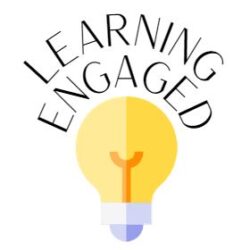(This post may contain affiliate links.)
Great research on perspective-taking can be found here.

Teaching perspective-taking to students is arguably one of the most difficult concepts to teach. Students (like some adults) often have a hard time thinking about what others are thinking and feeling. While a natural stage in development, it is still important for students to learn how to analyze the perspective of others.
Perspective-taking is being able to understand the viewpoint of someone else, a concept that is valuable for reading comprehension, but also a skill students can use for:
-conflict management
-critical analysis of text
-making connections to text and others
-evaluation of digital resources (helping them realize that everything they read on the internet is not true – e.g., tree climbing octopus)
Beneficial for all genres and content areas, perspective-taking enhances comprehension from a shallow understanding to a deeper analysis of the text. Instead of students simply understanding what happened in a text, they begin to understand why it happened.
Additionally, by being able to understand other’s perspectives, students begin to make deeper connections to the text. Instead of just going through the motions of making text-to-text, text-to-self, and text-to-world connections, students use the deeper understanding gained through perspective-taking to look at a text differently.
Arguably, all teachers are reading teachers as students must be able to read and comprehend in any discipline. Daniel Willingham helps us understand this concept more by highlighting experiences and background, adding to our schema, are what truly makes us learn and understand new things. If you haven’t read Willingham’s book, Why Student’s Don’t Like School, you should. It will change the way you teach.
Click for a book summary or to purchase Willingham’s book. A video summarizing Willingham’s idea can be found here.
Creating background like, for example, if we are studying Newton’s Laws of Motion but have no understanding of the force of fiction, we will have a much more difficult time understanding the concept. Introduce a lesson on friction and experience is gained, connections are made, and understanding is deepened.
While we often work to build schema in reading, it must happen in all content areas. Teaching students how to evaluate a piece of text from multiple perspectives will begin the discussion of making connections and developing a deeper understanding, a greater interest, and thus, a stronger buy in for the text being read.
So, how do you help your students develop perspective-taking skills? It all starts with picture books, regardless of grade level. I have found that all students love to be read to and picture books are a great way to get read aloud time in one class period.
- Find a picture book that works for perspective-taking. A list of books that can be used for perspective-taking can be found here.
- Pick 3-4 points in the book where two characters, groups, etc. have different perspectives on something.
- Ask the students what each character, group, etc. is thinking or feeling in regards to each point, focusing on how they can connect to the point and what they feel about the point.
- During the discuss, have your students support their responses with evidence from the text, their own experiences, any other evidence they have.
After you do this multiple times, you will find your students develop a better understanding of perspective-taking, an increased vocabulary, and a deeper understanding of text. The discussions are rich and the learning is fantastic.
A fantastic resource to learn more about perspective-taking can be found here.

